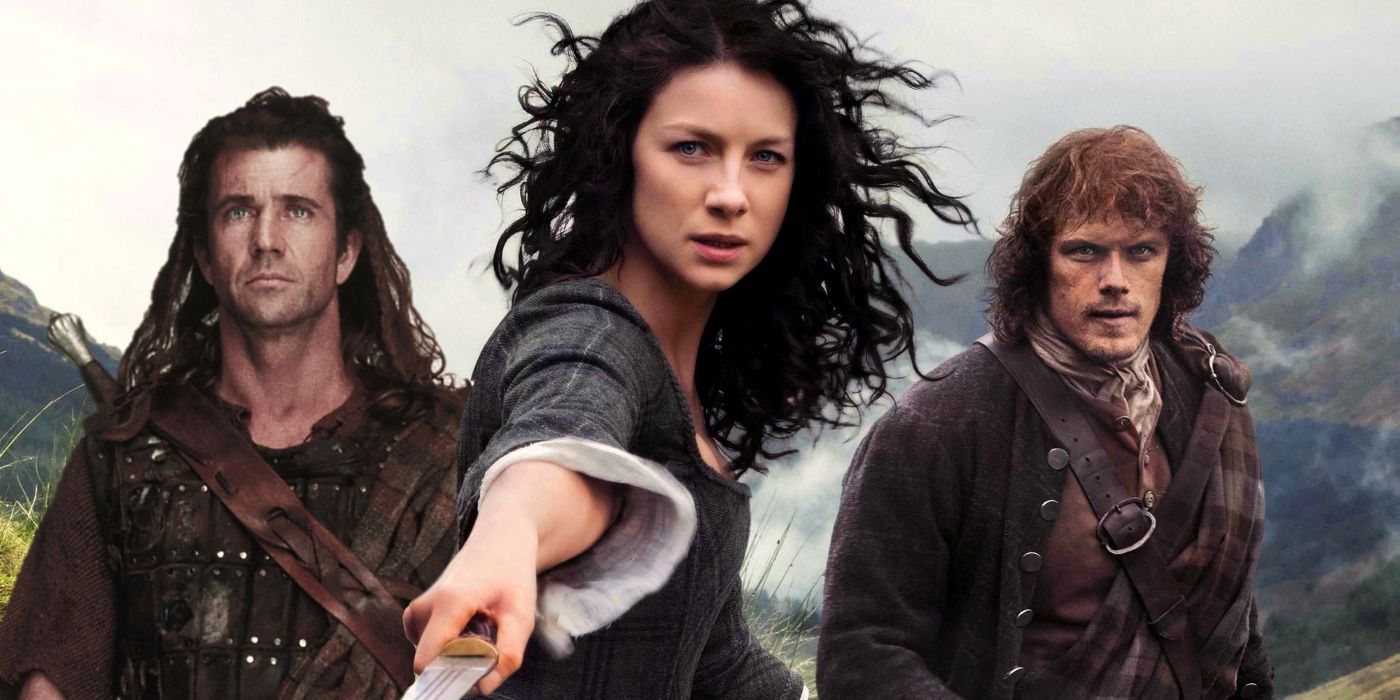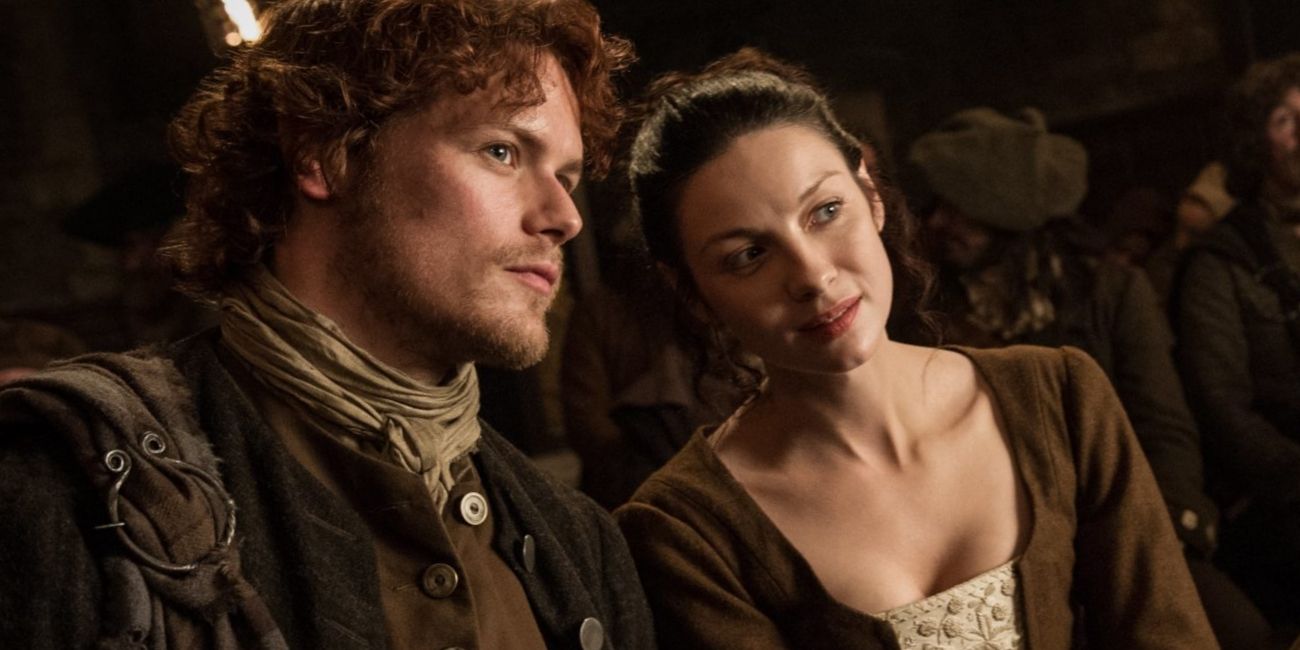With Outlander now available on U.S. Netflix, a brand new audience is diving into the intrigue of Highland romance, tragedy, and a war for Scottish independence. Which raises the question: how close is the show's setting to the other famous story, Braveheart?
For those who aren't well versed in Scottish history, it's an understandable question. The massive war epic made William Wallace, his cry for "Freedom!" and Mel Gibson's Scottish accent known around the world. So with Outlander becoming arguably the second most popular trip back into Scottish history, casual viewers will surely wonder if or how the two stories are related, even if they don't ask it. We've got the answers, and while the shows are much farther apart than any viewer will probably guess, that actually proves one of Outlander's main threats.
Just so fans are aware of how little chance there is of Jamie Fraser or Claire Beauchamp running into William Wallace, we'll clarify that Braveheart takes place 450 years before Outlander. When Braveheart begins (around 1295), Scotland is still recovering from having their royal line severed, calling on England to help elect a new royal family, and descending into a new feud when King Edward took the opportunity to try to bring Scotland under English authority. The events of the film are accurate where the dates themselves are concerned, ending in 1314 with Robert the Bruce beginning his path to the throne, and the first documented declaration of independence making Scotland a sovereign kingdom.
The next four centuries progressed relatively peacefully between England and Scotland, and when King James of Scotland also inherited the throne of England in 1603, it began a shared rule that calmed matters until 1688, when a political revolution saw the Stuart line forced out of the throne in favor of an English monarch. Soon after came the Jacobite Rebellion of 1715 to return a Stuart to the throne, and yet another in 1745 to restore them once again. It is here where Outlander's period story begins, in the lead-up to the Jacobite uprising that saw the movement soundly defeated, and the introduction of English demands that finally brought the ancient Highlander culture to an end.
The fact that such a massive span of time did little to cool the emotions between Scotland and England speaks for itself. But we should specify that the one thing Braveheart and Outlander do have in common is that they are stories told in the Highlands specifically. Once Claire realizes that she has traveled back to the years leading up to the Jacobite uprising, she can't help but feel for these people who--unbeknownst to them--will see their proud way of life die in their own lifetime. And nothing emphasizes that sadness like the fact that Outlander's Scots, whether in casual dress or formal attire, don't look too different to the unfamiliar eye.
It's impossible to ever claim that one historical chapter ever ends, and another begins without acknowledging their nature as parts of a larger whole. But in the case of Braveheart and Outlander, the centuries of separation mean the narratives don't overlap. At least not historically. Thematically, well, we have a hard time imagining that William Wallace wouldn't get along just fine with Jamie Fraser.
Outlander Season 1 & 2 are available now on Netflix.


